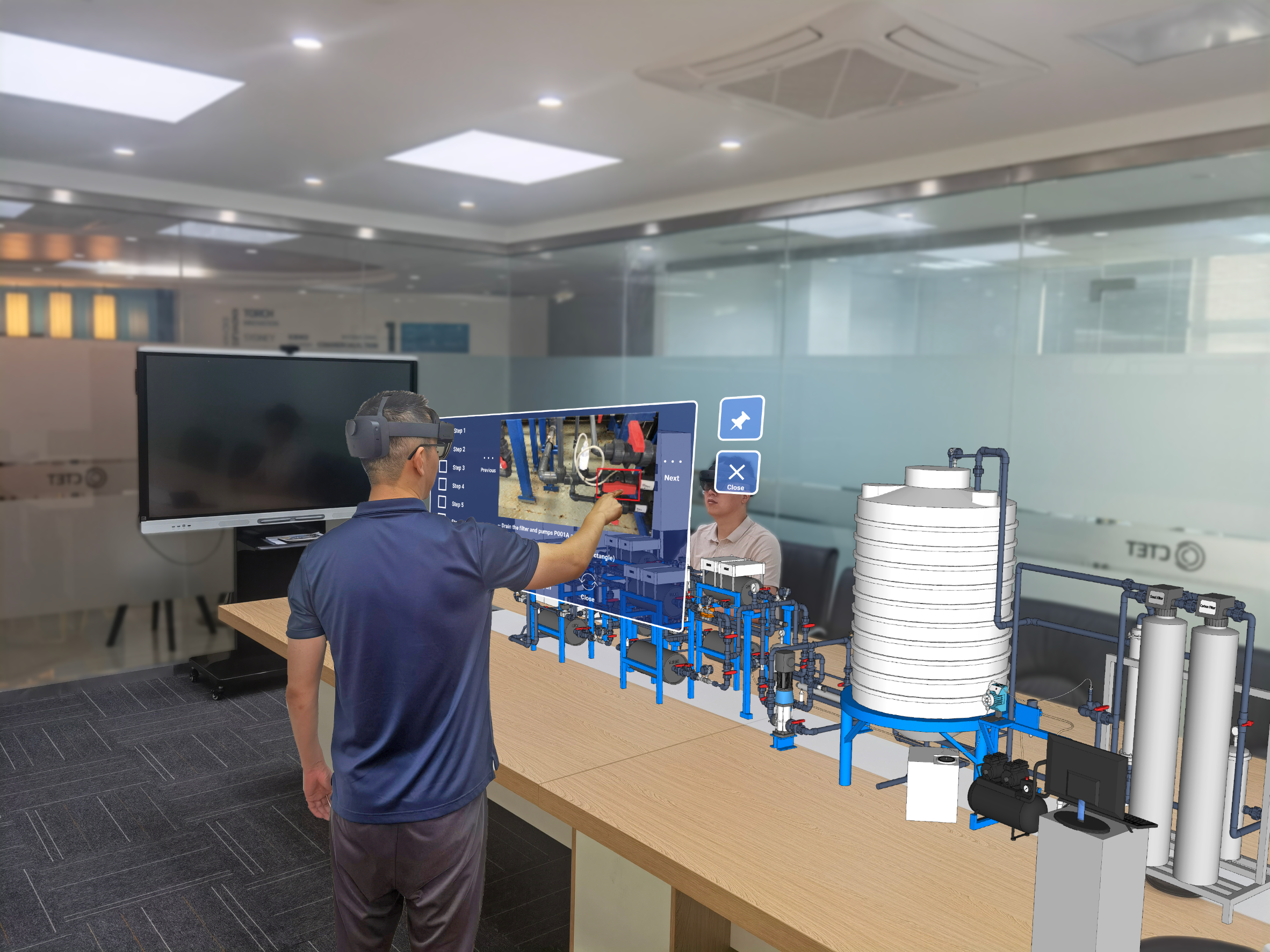Introduction
___
Three levels of DTs: Status Twin, Operational Twin and Simulation Twin
-
Status Twin: Monitor the conditions of water treatment plants. Integrate operational data from network sensors (e.g. pressure in pipes, flowrate and location of assets) for easy training and maintenance.
-
Operational Twin: Users can interact with the DT and exchange various operating parameters. Mainly used to support training of plant operators, provide real time technical support and optimise plant operation.
-
Simulation Twin: DTs are linked to our simulation results (e.g. CFD, chemical kinetic modelling, chemical process modelling and Artificial Intelligence/Machine Learning). Mainly used to support the design of new processes/plants, predict plant performance and operational cost.
Competitive advantage
___
We incorporate Industry 4.0 perspectives in the development of innovative water and wastewater treatment technologies
- A strong simulation-based technology/product development process leveraging our decades of professional experience in Computational Fluid Dynamics (CFD) and chemical kinetic modelling.
- Digital Twin of water and wastewater treatment technologies presented using Virtual Reality (VR) and Augmented Reality (AR).
- Operating data streamed live from our treatment plants used to prevent unplanned downtime, improve the accuracy of the digital twin and shorten the time required for development of the next generation of products.
Applications
__
Case Study
Digital Twins for Membrane Capacitive Deionisation (MCDI) Systems
Our digital twins for membrane capacitive deionisation (mCDI) systems incorporate live SCADA/PLC data, real-time interaction, and have been deployed in remote operation and immersive training.
We have validated VR/AR-based operator training with performance gains up to 18%, particularly in equipment recognition and procedural adherence.



